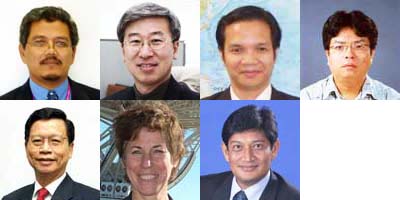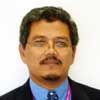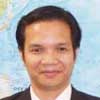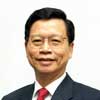New Year Message from the APRSAF member's countries for activities in 2007


New Year Message form National Space Agency of Malaysia (ANGKASA), Malaysia
-Dr. Mustafa Din Subari, Acting Director General of the ANGKASA
The year 2007 has been a fruitful year for us, especially with the successful launch of our angkasawan (the Malay word for astronaut) who went to the International Space Station (ISS). We eagerly look forward to achieving more things in 2008.
After completing the mission, our angkasawan is going to schools as part of an education and awareness program, aiming to cultivate an interest in science and technology among the five million school children in Malaysia. This, in fact, is the main objective of the angkasawan program. Similar programs for reaching the public at large are also planned that include setting up an angkasawan-related exhibition and celebrating the period from October 10 to 21 as National Space Week.
The National Planetarium will continue pursuing its multi-prong education and awareness initiatives in space science, also targeting school children and the public at large. A new exhibition on angkasawan is now open.
Initial analyses of the micro-gravity experiments carried by our angkasawan at the ISS have shown positive results. Full reports of the analysis are expected to be ready by the end of the first quarter of this year. We have already initiated discussions with JAXA for future collaborations to use the Japan Experiment Module (JEM). Continued post-mission experiments of our angkasawan with ESA are still to be completed.
Malaysia's first operational Earth observation satellite, Razaksat, is expected to be launched in the first quarter of 2008. Hopefully by the middle of this year, its 5.0 meter multispectral and 2.5 meter panchromatic images will be available for the remote sensing community, especially those images covering the Near Equatorial Region.
The year 2008 is also a year to begin our next satellite development project, which concerns a medium-size geosynchronous communication satellite. The Fixed Satellite System (FSS) is intended to provide communications pipes for governmental public services, mainly for providing a much-needed backbone for the Multimedia Super Corridor (MSC) flagship programs such as e-government, e-health and smart schools. It is also intended to provide a linkage with remote areas within the country, which until now have been underserved, in our effort to bridge the digital divide. This project is expected to be completed in several years.
Together with the communication satellite, a system to augment the navigation satellite system will also be developed. The Malaysian Satellite-based Augmentation System (SBAS) aims to enhance the reliability level of satellite navigation applications for Malaysian users as well as other users within the region.
The ground infrastructure for our future satellite programs will continue to be developed. We will continue to use the Assembly, Integration and Test (AIT) facilities and several laboratories at the Malaysian Space Centre at Sg. Lang. With these facilities, the local capability will be further enhanced. We will also offer these facilities for others to use.
Both the stellar and solar robotic telescopes at the Langkawi National Observatory (LNO) will be fully operational this year. Soon that observatory will be open to the international astronomer community, offering the opportunity to observe both the northern and southern skies with a single platform.
A COSPAR Capacity Building Workshop in Space Optical and UV Astronomy is planned for June 2008, another meaningful cooperation program with the International scientific community to acquire knowledge, after the successful implementation of the International School for Young Astronomers (ISYA) in 2007.
Within these international initiatives, Malaysia will continue to be involved with GEO, ICG, and others, and continue to participate in the United Nations Committee on the Peaceful Uses of Outer Space (COPUOS).
ANGKASA Website:
http://www.angkasa.gov.my/welcome/index.html

New Year Message from KARI, Korea
-Dr. Chin-Young Hwang, Director of the Policy & International relations department, KARI
Wishing much peace, love, health and happiness to all in 2008!
South Korea has completed a new roadmap for Korean space development and announced a plan to launch its first lunar explorer by 2020. This coming April, Korea's first astronaut, Mr. Ko San, will fly to the ISS in a Russian Soyuz spacecraft for scientific missions. Korea's first spaceport Naro Space Center is scheduled to be completed by early this year. The Korea Space Launch Vehicle (KSLV) program, which will be a stepping-stone for Korean space activities, will also be finished by the end of this year. This national space program will enable us to launch our own satellites from our land using Korean rockets.
Last September, Japan successfully launched the lunar explorer KAGUYA to obtain scientific data on the origin and evolution of the Moon and to develop technology for future lunar exploration.
The Chinese lunar orbiting spacecraft, Chang'e 1 was also launched last October to probe elements on the Moon and the environment of space.
In addition to those countries' success, India is putting its best technology into the completion of a Moon explorer called Chandrayaan, which will be launched by the end of this year.
Over the last century, the United States and Russia have been the main players in the space race. But, in the 21st century Asian countries have become major players in the exploration of outer space with their ceaseless development of space capabilities.
Asia's progress in space science and lunar programs has so far advanced rapidly. The importance of space development is growing throughout the world. For greater space development, we need closer cooperation among countries to share the benefits obtained from space.
Last year, South Korea decided to participate in Sentinel Asia Project, and this year we expect to be more involved than ever in supporting disaster management in the Asia-Pacific Region.
I confidently believe that the countries in Asia will contribute to a better world through space development programs and will become leading space nations sooner rather than later.
Best wishes for the prosperity of APRSAF!
KARI Website:
https://www.kari.re.kr/index1.asp

New Year Message form the Science and Technology Coordinating Council Committee on Space Technology Applications (STCC-COSTA), Philippines
-Dr. Jose Edgardo L. Aban, Technical Secretariat of the STCC-COSTA, Department of Science and Technology (DOST)
Esteemed Colleagues and Friends,
The year 2007 was a very dynamic and eventful year for the Philippine Space Technology Applications sector in general and in particular for our organization, the Science and Technology Coordinating Council-Committee on Space Technology Applications (STCC-COSTA).
The past year was monumental in that we were fortunate to have co-hosted with the Japan Aerospace Exploration Agency (JAXA) the Fourth Joint Project Team Meeting (JPTM4) under the aegis of the Sentinel Asia Project. Also, 2007 marked the holding of the second biennial event, dubbed the National Congress for Space Technology Applications and Research (NC-STAR), which paves the way for bolder steps by the Philippine government in implementing and institutionalizing space technology application programs that are current and relevant to the local needs and situations in the Philippines. In 2007, the Philippine government held a number of projects, which were aimed at beefing up its disaster monitoring and hazard mitigation capabilities, by investing on the necessary infrastructure to receive satellite data (i.e. NOAA and MT-SAT).
We at the Secretariat of the STCC-COSTA would like to extend our heartfelt felicitations for the New Year and look forward to revitalized and renewed collaborations with our neighbors, in pursuit of common, sustainable development in the region.
The Secretariat of the STCC-COSTA would like to take this opportunity to once again send our best wishes to JAXA and our regional space agency partners. A blessed and prosperous New Year to All! Mabuhay!
STCC-COSTA Website:
http://www.pcastrd.dost.gov.ph/modules.php?name=Home&file=stcc-costa1

New Year Message from Space Technology Institute (STI), Vietnam
-Dr. Pham Anh Tuan, Vice Director of the STI
The opening ceremony of the Space Technology Institute (STI) was held on April 3, 2007. STI is affiliated with the Vietnamese Academy of Science and Technology (VAST) and its tasks are to research and develop satellite technology to be used for GIS and GPS, especially in remote sensing; to establish an infrastructure for space technology; to promote education and training activities; and to explore international cooperation.
One of the main space activities of STI in 2008 is to co-organize APRSAF-15 in Vietnam together with VAST, JAXA, MEXT and the Ministry of Science and Technology (MOST). APRSAF-15 will highlight and further promote cooperation in space technology between Vietnam and other countries in the Asia-Pacific Region. Another main activity of STI is to participate in APRSAF Projects such as Sentinel Asia and APRSAF-Satellite. To implement the "Vietnam Strategy for Research and Application of Space Technology" STI will carry out a feasibility study on the Hoa Lac Space Center Project and participate in the "Vietnam Earth Observation Small Satellite Project." To fulfill these tasks, STI would like to cooperate with other institutions in the region through the framework of APRSAF -an excellent forum- in order to get information and experience to promote research and applications of space technology. STI hopes that APRSAF will continue to contribute by providing opportunities for sharing experiences and resources in space technology and applications among the countries in the Asia-Pacific region.
On the occasion of the New Year in 2008, STI wishes all countries participating in APRSAF new success in their development and application of space technology, and hopes very much to welcome participants from all over the world to APRSAF-15 in Hanoi.

New Year Message from Geo-Informatics and Space Technology Development Agency (GISTDA), Thailand
- Gen Dr. Vichit Satharanond, Chairman of the GISTDA Executive Board
Dear APRSAF News Readers,
It is an honor and privilege for me to deliver my message here again in APRSAF News. Let me first convey my best wishes for the year 2008 to all readers.
In 2007, the Geo-Informatics and Space Technology Development Agency (GISTDA) continued receiving data from Landsat 7; SPOT 2, 4, 5; Radarsat; MODIS; and NOAA. And it also started receiving ALOS data. Unfortunately, the launch of the first Thailand Earth Observation Satellite (THEOS) has been delayed.
However, the satellite has already been transported to the Yasny launch site in Russia and is scheduled to be launched early this year. In 2008, GISTDA will therefore focus on the promotion of THEOS applications both in Thailand and neighboring countries. Capacity building is also one of our main activities.
As for international cooperation, GISTDA as usual continues to cooperate with various countries and international organizations. In November 2008, GISTDA and UNOOSA will jointly organize the Thailand/UN Workshop on Space Law, to be held in Bangkok.
Finally, I hope APRSAF continues to act as a successful forum in promoting space activities. GISTDA will ensure it continues to participate in and contribute to this forum, especially with regards to the Sentinel Asia Project, in order to help prevent and mitigate disasters in the Asia-Pacific region.

New Year Message from Commonwealth Scientific and Industrial Research Organisation (CSIRO), Australia
- Dr. Miriam Baltuck, Chair of the Australian Space Exploration Working Group and Director of the Canberra Deep Space Communication Complex, CSIRO
CSIRO participates in the International Space Exploration Coordination Group
Australia's national science agency, the Commonwealth Scientific and Industrial Research Organisation (CSIRO; http://www.csiro.au), represents Australia in the International Space Exploration Coordination Group (ISECG).
Following the May 2007 publication of "The Global Exploration Strategy: The Framework for Cooperation" (http://www.csiro.au/resources/pfw4.html), CSIRO convened an informal, inaugural workshop of government, academic and industrial scientists and engineers on August 21 and 22 to discuss possible Australian contributions to the Global Exploration Strategy. Based on this group's research and development strengths, and the maturity of their areas of technology, on relevance to the national interest, on likelihood of international partnering, and on likelihood of industrial participation, we saw two initial areas of focus emerging from the discussion. The first area relates to systems engineering, robotics and site characterization. The second area relates to radiation damage to DNA and its mitigation. We have initiated dialogue with fellow ISECG members to identify potential opportunities for collaboration in research and flight projects in these areas.
Next Steps in 2008
Australia's path to contributing to ISECG goals lies in international cooperation. Our growing, informal working group will reconvene early in 2008. Based on the responses to our initial report, we anticipate that our ad hoc group will continue to expand and include additional relevant activities and technologies even as we continue to pursue avenues in our initial areas of focus. We will pursue these through formal and informal meetings with ISECG members, participation in ISECG meetings and member events, and broadening our industrial outreach both domestically and with CSIRO's international industrial colleagues. Thus 2008 will be a year for furthering existing dialogues and identifying new possible partnerships.

New Year Message form, International Centre for Integrated Mountain Development (ICIMOD)
- Mr. Basanta Shrestha, Division Head of the Mountain Environment and Natural Resource Information Systems (MENRIS), ICIMOD
Greetings from ICIMOD and best wishes for the New Year 2008!
I would like to draw attention to the burning issue of climate change and its effect on the Himalayas, and share some of my thoughts from an ICIMOD perspective.
Undoubtedly, climate change has been the most pressing global concern of the 21st century. The year 2007 was a historic and momentous year in terms of the environment, and the series of international events on climate change has distinctly shown the scientific and political commitments of the highest level. There is much evidence to suggest that climate change is posing a serious security risk to human societies, and various factors show that the Himalayas is one of the most vulnerable regions in the world. The Himalayan ecosystem and the estimated 1.3 billion people in Asia that are dependent upon the goods and services of this unique ecosystem are more susceptible to physical, social and economic vulnerabilities than ever before.
ICIMOD has been conducting systematic research and studying Himalayan glaciers, glacial lakes and glacial lake outburst floods. Space technology, especially satellite-based remote sensing, has been the key element in our research studies. Our findings suggest that Himalayan glaciers are retreating at rates ranging from 10 meters to 60 meters a year and many small glaciers have recently disappeared completely. The rapid melting of glaciers has dramatic consequences for the mountain ecosystem, such as changes in seasonality of snowfall and water availability, species migration and habitat loss, changes to forestry and agricultural production, hydropower generation and infrastructure, atmospheric composition and deposition, and potential increases in climate-induced hazards.
ICIMOD is giving due recognition to climate change as a major factor concerning the livelihoods and social and environmental security of the people living in the Himalayan region. We are placing the highest priority on this in our strategic focus, and as ICIMOD is celebrating its silver jubilee in 2008 we want to increase awareness that the resilience and adaptation to climate change of the people in the Hindu Kush-Himalayan (HKH) region is an essential element for furthering regional sustainable development as a contribution to a peaceful world. The second point in our strategic focus involves making ICIMOD known in the region and globally as a professional and essential player with regards to adapting to climate change in the Himalayan region. To this effect, ICIMOD is making an appeal to the international community to help develop better scientific understanding of the consequences of global climate change and to take corrective and precautionary measures before it is too late.
I would also like to take this opportunity to inform you that in the first Asia-Pacific Water Summit held in Beppu, Japan in December 2007, ICIMOD organized a special panel session called "Climate Change, Glaciers, and Water Resources in the Himalayan Region" which was attended by His Imperial Highness the Crown Prince of Japan, former prime minister and chairman of the APWF Mr. Mori, the prime minister of Bhutan, ministers from ICIMOD member countries, the famed Japanese climber Ken Noguchi and other high-level dignitaries from the UN and multilateral and international agencies, and from Japan. The forum proved to be one of the most effective platforms for ICIMOD to increase the visibility of its efforts at the global level and was an excellent opportunity for ICIMOD to highlight the importance of the entire Himalayan region in the global ecosystem, acting as it does as Asia's water tower.
During the summit and subsequent visits to Japan, I also found that the Japanese media were highly aware of the issue of global climate change and Japan's role, especially in view of the G-8 summit being held in Japan in 2008. I do hope that the coming G-8 summit will give due consideration to the effect that climate change is having on the Himalayas and to support international cooperation regarding this matter.
I would like to conclude with the hope that there will be increased international cooperation to combat the negative effects of climate change in the Himalayas in 2008 and beyond.